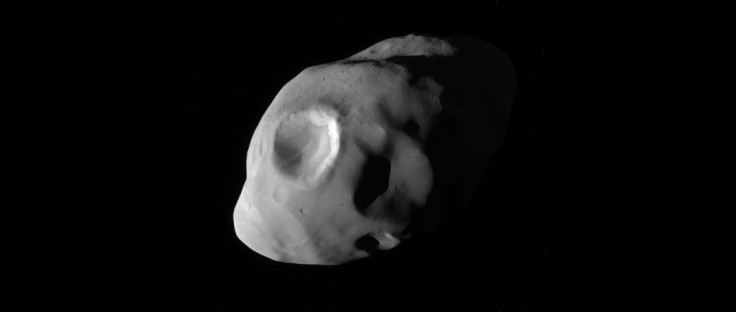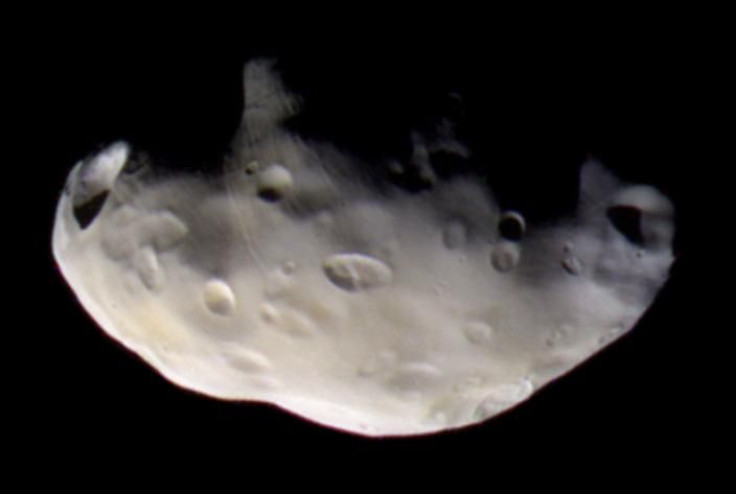NASA's Cassini Spacecraft Captures High-Resolution Image Of Saturn's Moon Pandora

NASA's Cassini spacecraft, locked in orbit around Saturn since 2004, has managed to capture one of the highest-resolution images of the planet's moon Pandora ever taken. Pandora, one of Saturn's 53 known moons, orbits just outside the F-ring, which is which is roughly 500 miles wide.
"The spacecraft captured the image during its closest-ever flyby of Pandora on Dec. 18, 2016, during the third of its grazing passes by the outer edges of Saturn's main rings," NASA said in a statement accompanying the image. "The image was taken in green light with the Cassini spacecraft narrow-angle camera at a distance of approximately 25,200 miles (40,500 kilometers) from Pandora. Image scale is 787 feet (240 meters) per pixel."
From our new Ring-Grazing orbit, we've captured some of the highest-resolution views ever of Saturn's moon Pandora https://t.co/UoG2LwYprC pic.twitter.com/DQXchDtcyy
— NASA Solar System (@NASASolarSystem) December 21, 2016
Prior to this, the best view we had of Pandora was one taken by Cassini in 2005, when it captured infrared, green and ultraviolet images of the 52-mile-wide object.

Saturn’s rings, first observed by Galileo in 1610, are made mostly of water-ice granules. The planet has four main ring systems, named alphabetically in the order they were discovered — A, B, C and D — and several other, much fainter rings that lie farther from the planet. Cassini will, during upcoming ring crossings in March and April, plunge through the dusty outer reaches of the F ring.
Once these ring-grazing experiments are done, Cassini will begin its “grand finale,” during which it will pass just over 1,000 miles above the thick clouds that enshroud Saturn. This would then be followed by a fatal plunge through the planet’s atmosphere on Sept. 15 — a move that NASA said is needed to protect Saturn’s potentially habitable moons.
"This is it, the beginning of the end of our historic exploration of Saturn. Let these images — and those to come — remind you that we’ve lived a bold and daring adventure around the solar system's most magnificent planet,” Carolyn Porco, Cassini imaging team lead at Space Science Institute, Boulder, Colorado, said in a statement released earlier this month.
© Copyright IBTimes 2024. All rights reserved.












